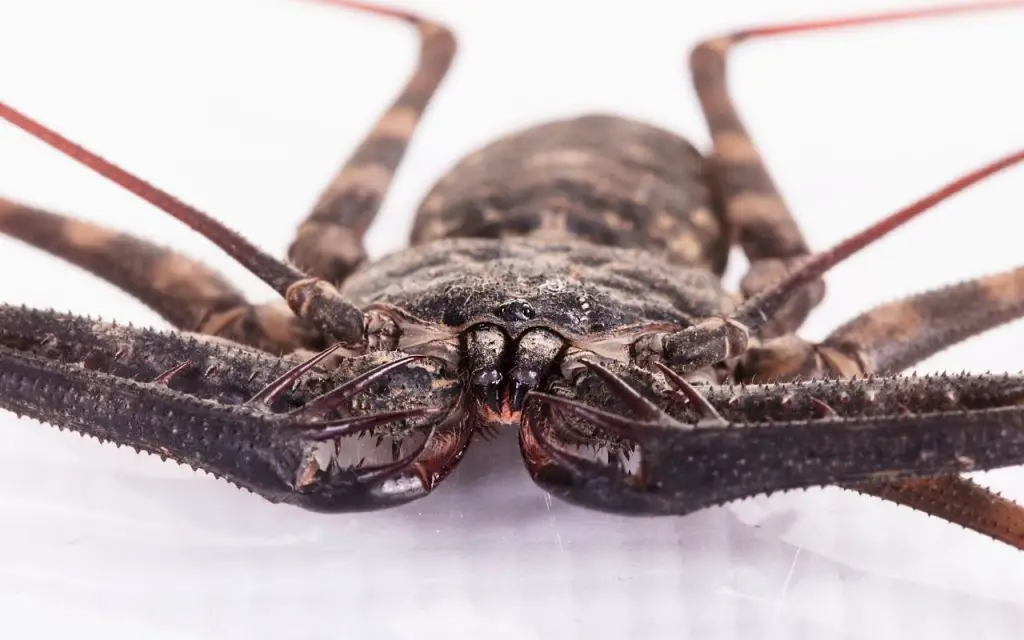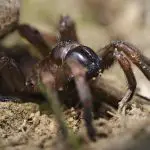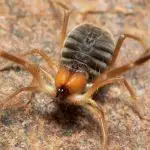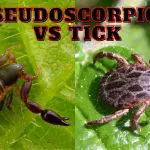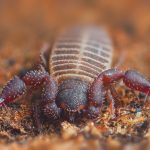Last updated on June 28th, 2023 at 09:19 am
What do Tailless Whip Scorpions eat? In short, anything that is pretty small and doesn’t fight back too much. Keep reading to find out more…
Tailless Whip Scorpions eat a range of small invertebrates, and sometimes even vertebrates, too. In general, they prey on cockroaches, crickets, small spiders, beetles, and grubs. In some regions, they been observed to eat frogs and small mammals, though this is considered uncommon. Generally speaking, they like to tackle smaller, weaker prey that they can overpower easily.
Tailless Whip Scorpion Diet
The tailless whip scorpion is an arachnid that eats other animals. Their “whips” are in fact long, specialised legs that have evolved into feelers.
The tailless whip scorpion uses its them for cartography: it can use its whips to help map out the area around it. This helps them identify landmarks but also to feel bugs moving around in the dark.
They don’t have any particular food preferences either apart from being carnivorous. If you were going to guess how a tailless whip scorpion would like its meal, we’d say something with lots of protein and fat would be good.
Whip scorpions are predators with powerful mandibles that allow them to crush and tear through their prey easily. They really just have the “grab, hold, and munch” hunting method – not unlike preying mantids.
Given their troglodytic lifestyle, the most common items in their diet include:
- cave crickets
- small spiders
- roaches
- small lizards
- beetles
- beetle larvae
- other larvae
- frogs
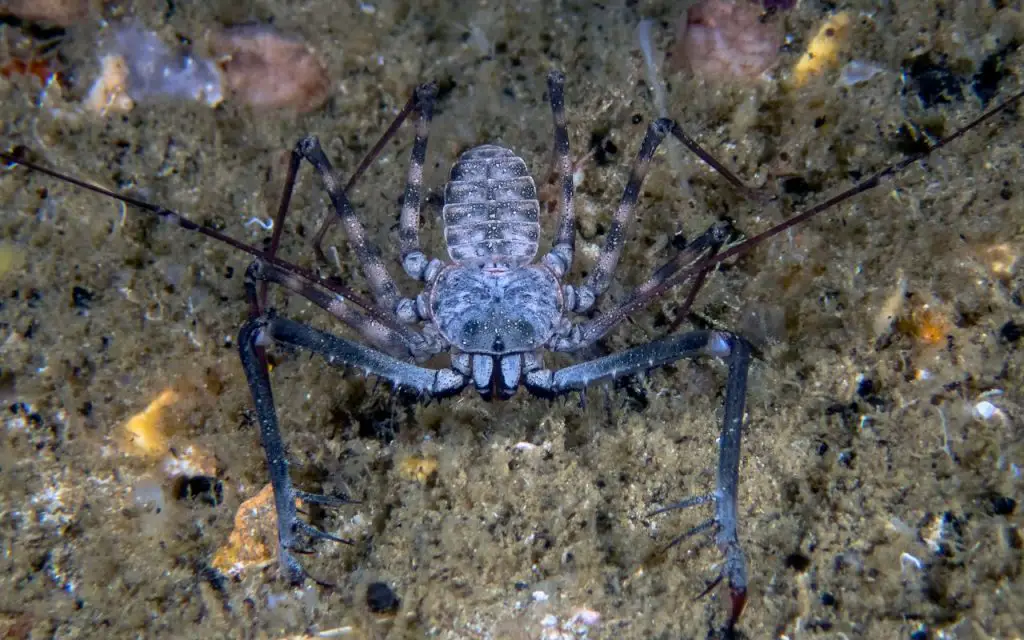
Where do tailless whip scorpions live?
The tailless whip scorpion is an arachnid that lives in tropical and subtropical regions, especially in North and South America, Asia, Africa, and Australia. They are a unique group of arachnids, due a number of facts that set them apart.
The tailless whip scorpion lives in small caves and crevices with high humidity and dampness.
The caves they live in are covered with rocks, so no sunlight can get into them. That helps keep the humidity high so that the scorpions can survive there for extended periods without needing to eat or drink.
Tailless whip scorpions are nocturnal creatures who spend most of their day sleeping, then emerge at night to forage for prey by touch.
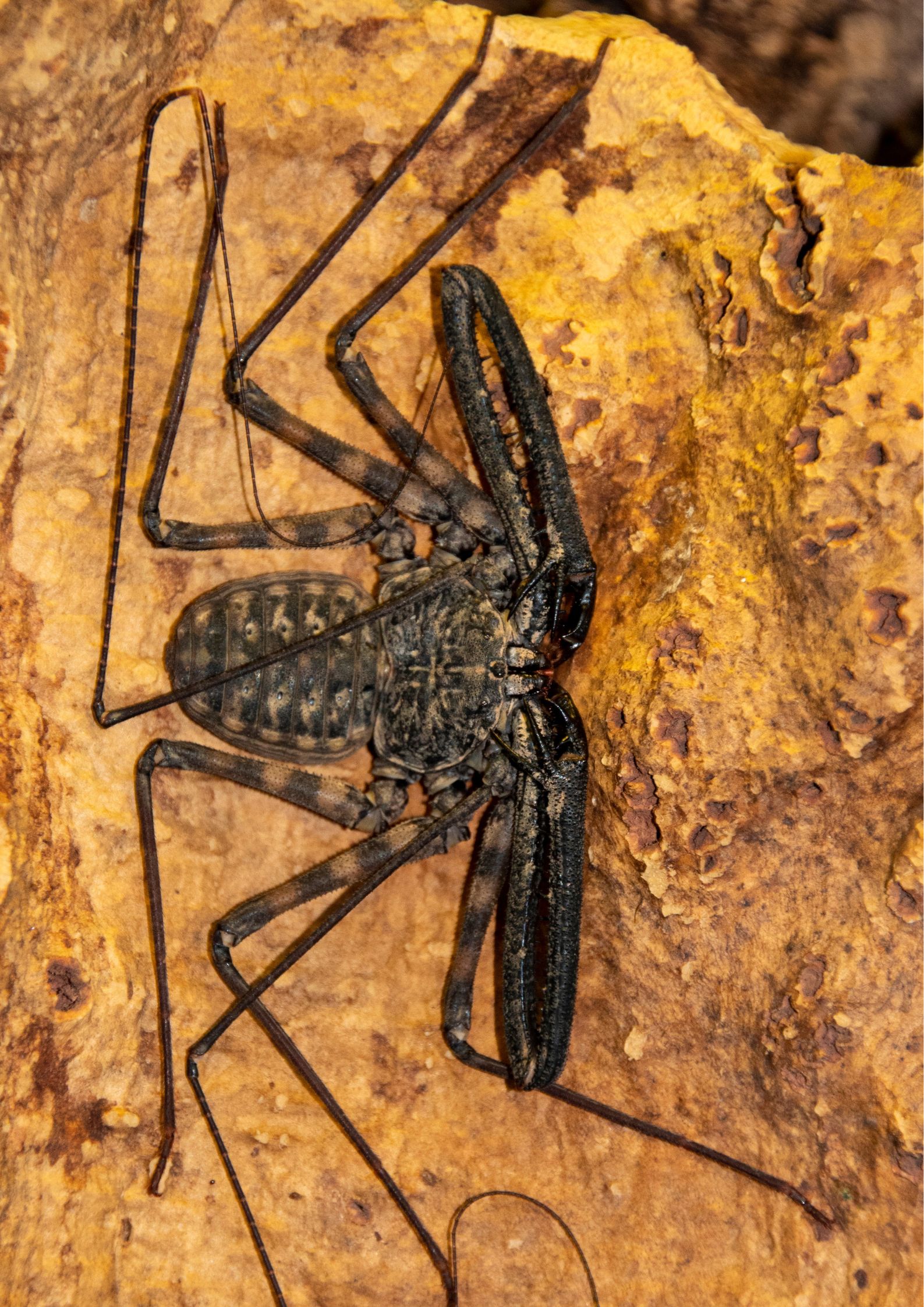
Tailless whip scorpion for sale
The Tailless Whip Scorpion is not a scorpion, despite its name. Instead, it’s known as a Amblypygi, which is an order of arachnid chelicerate arthropods. The whiplike forelegs that it uses as feelers make it unique and gives it its name.
These creatures are primarily nocturnal and are rarely seen by humans. This does make them a little hard to observe as pets, given that they try their best to hide from you! Nonetheless, they make a fascinating pet for an arachnid enthusiast.
Whip scorpions are often kept at zoos or by collectors who wish to keep them as pets. However, they are also used for scientific research, such as testing salivary gland proteins.
If you want to find a Tailless Whip Scorpion for sale, I recommend looking for a dedicated reptile store in your area. These stores generally sell a range of exotics, including aracnids, and may be able help you get one.
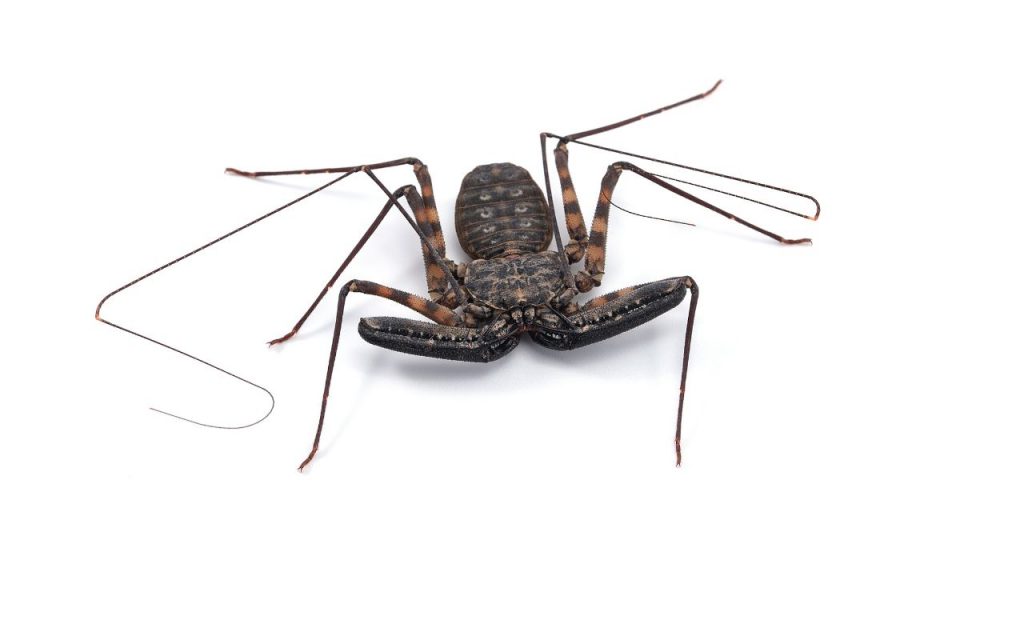
Do tailless whip scorpions bite?
No, tailless whip scorpions do not bite. However, they can grab fingers and other body parts and leave thorn-like puncture marks. To be honest, in my experience they generally don’t bother biting unless you tease them, though.
While whip scorpions may look like something out of a horror movie, they are harmless and can’t bite hard or sting. Overall, they are actually extremely delicate.
If you came upon one of these bugs in the wild, you would probably notice that its pinchers are tiny and will not cause any damage at all. Many species are also very small.
*Note: if you’re thinking about getting one as a pet, check out my Tailless Whip Scorpion care guide.
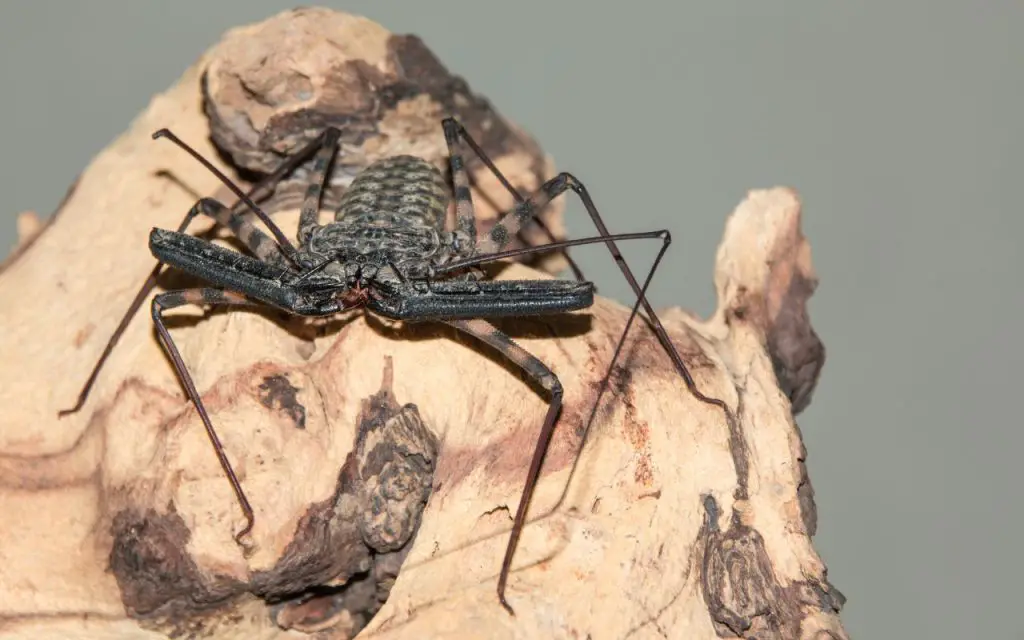
Tailless whip scorpion size
The tailless whip scorpion is a small, nocturnal critter that can grow up to 2 inches long. Though there are many species around the world, the majority of them are very small.
Overall, there’s only one species that gets to a large size: Charon grayi, also known as the giant whip-spider. This species is unique in that its legs can reach up to 27 inches (68cm) long.
What you will notice with these arachnids is that in proportion to their size, they are slim and lightly-built. Comparatively, scorpions, tarantulas and Vinegaroons are much stockier.
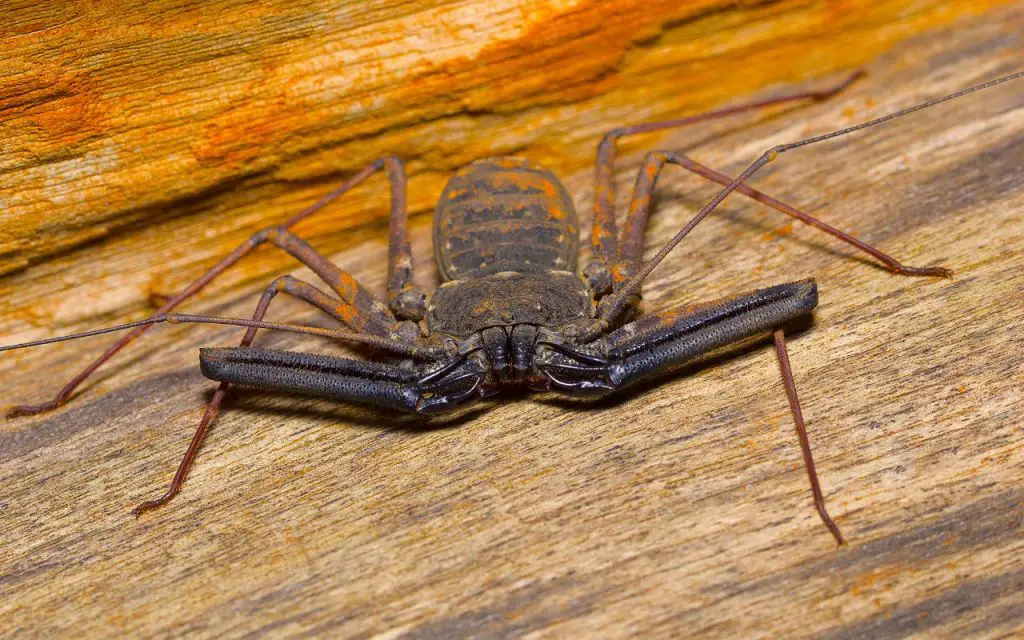
How long do tailless whip scorpions live?
The lifespan of a tailless whip scorpion is about five years. This may seem short, but you must remember that they grow very fast and can live longer in captivity.
The short wild lifespan is generally down to predation and how tough life in the wild is. If you keep one as a pet, and care for it well, it could live for 10 or possibly even 15 years.
As with many arachnids, humidity plays a big role in how long they’ll live. If you overheat your Tailless Whip Scorpion, it will get dehydrated and die quickly.
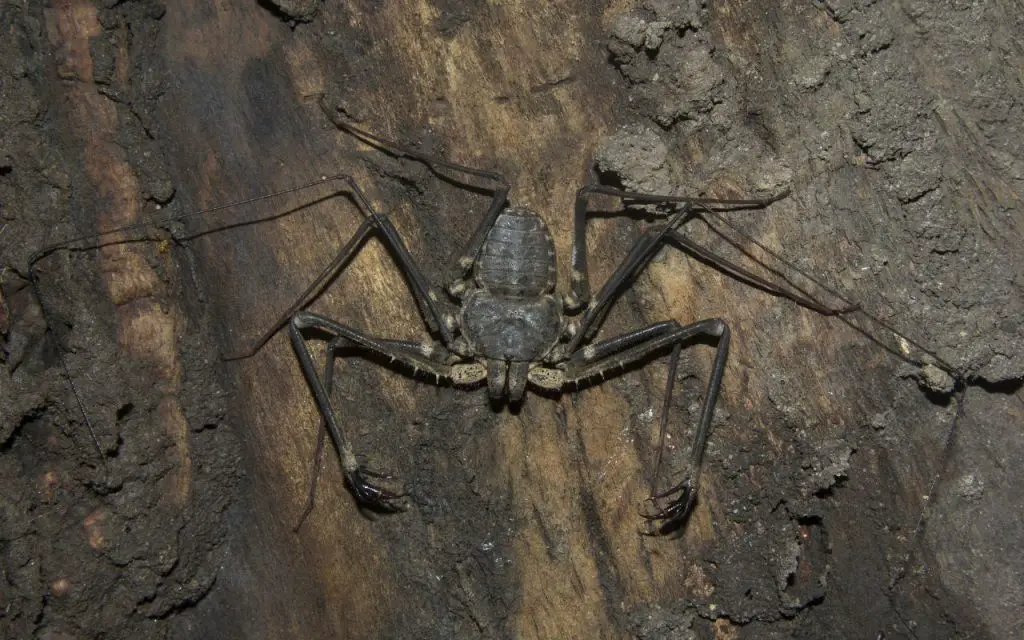
Tailless whip scorpion Arizona
The tailless whip scorpion, Paraphrynus mexicanus, is an arachnid that prefers to live in the desert southwest region of Arizona. They can be found across the United States and Mexico. This makes them easy to identify as they are the only species of Tailless Whip Scorpion accross much of their range.
These arachnids are commonly found in the tropical regions of Africa, Asia, and Australia. In the American southwest, however, they are able to survive because of the warm climate.
That said, they dry out and die of dehydration quickly if exposed to sunlight, so spend most of their time hiding under large rocks or in abandoned rodent burrows. Your best chance of spotting one in Arizona is to look on walls and boulders during the cooler hours of the night.
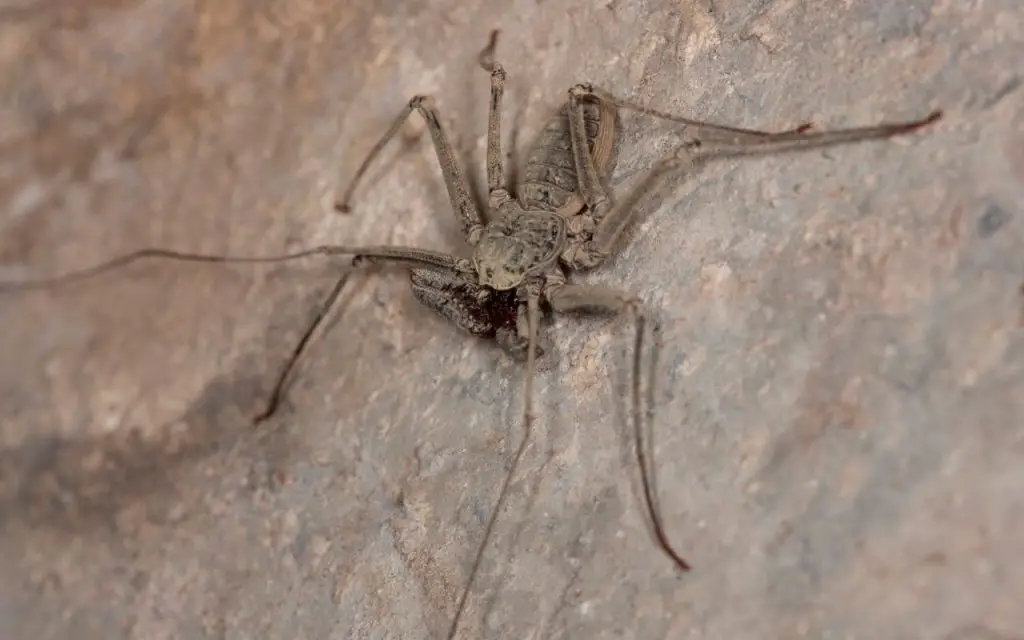
FAQ relating to what do tailless whip scorpions eat
How frequently should a tailless whip scorpion be fed?
They’re small, inexpensive, and don’t make much noise. They also only need one to two weekly feedings—these can be as little as 1/4 the body size.
If you’re feeding your pet a tailless whip scorpion, they will eat less than you might expect! So you’ll need to ensure that each meal is roughly half the size of the body (or smaller).
When your pet’s done eating, remove any uneaten prey 24 hours after offering at the most, so it doesn’t harass your pet.
How long can a tailless whip scorpion go without eating?
A tailless whip scorpion’s ability to go without food for an extended time relies on several variables, including the animal’s age, size, health, and accessibility to food. Like all primitive arachnids they have a slow metabolism, so won’t die if you forget to feed them for a few days.
Amblypygids, just like the Vinegaroon can go for two or three weeks without food, although this is not advisable. If the animal is molting, ready to molt, or has just molted, it should not be fed.
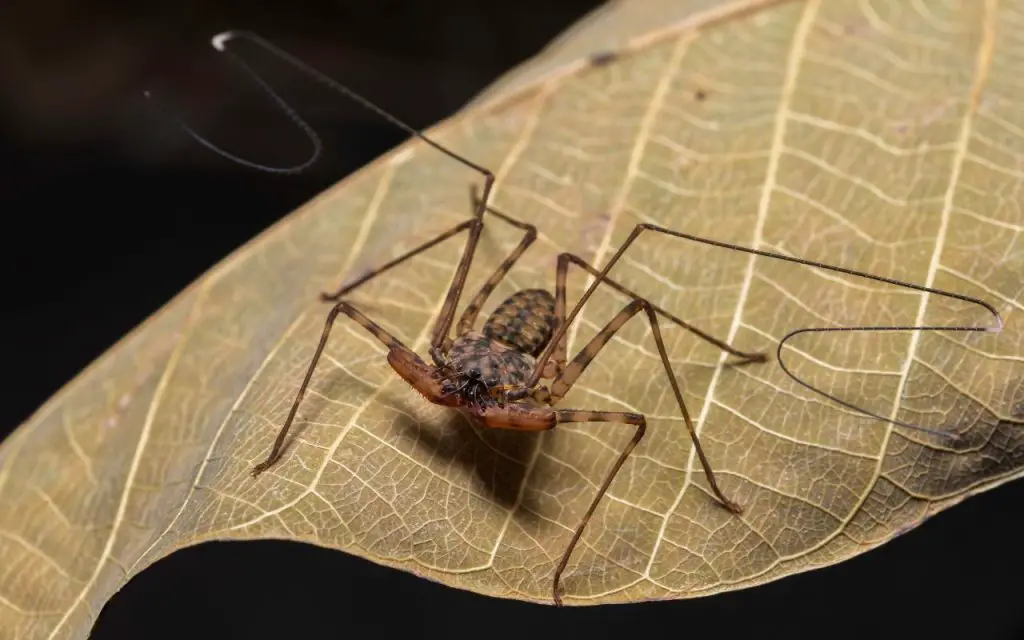
Do tailless whip scorpions eat mealworms?
Tailless Whip Scorpions will occasionally eat mealworms when offered. In my experience, though their favourite food is either regular crickets, black crickets or Dubia Roaches.
This is probably because they touch by touch, and their feeding response is more easily triggered by prey that runs around. Mealworms in comparison are slow-moving and not particularly exciting for this kind of hunter. That said, there’s nothing wrong with them as far as nutrition goes.
Can tailless whip scorpions hurt you?
First, whip scorpions aren’t scorpions at all—they’re arachnids (the same category as spiders, scorpions, and ticks). And while they may look like deadly predators with their prickly pincers, whip scorpions generally stay away from humans.
Whip scorpions are not venomous or dangerous to humans. Instead, they’re usually drawn to lights because they like to eat the bugs that gather there. If you encounter one on your property, there is absolutely nothing to worry about. On the contrary, they are quite good at controlling pests such as cockroaches.

